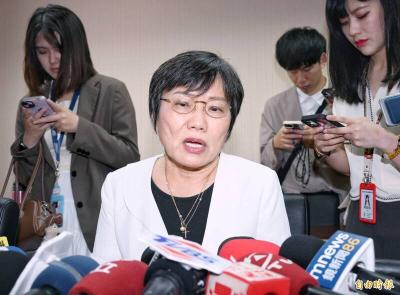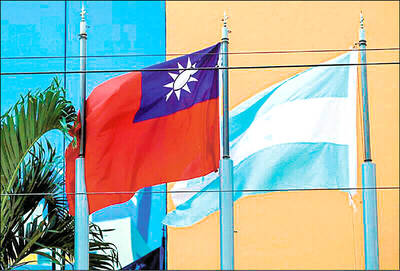The architectural firm that had been selected to design the National Palace Museum’s Southern Branch has withdrawn from the project.
Antoine Predock Architect PC said on Tuesday that it was quitting the design project with immediate effect and billed the museum headquarters in Taipei for NT$40 million (US$1.2 million) in compensation for losses incurred.
The firm had been selected by a competition jury four years ago from a field of six finalists to design the museum in Chiayi County.
Chiayi County officials in charge of cultural affairs said the firm’s unilateral decision to pull out may have been the result of a failure to reach an accommodation with the museum over serious construction delays, design methods and the quality of building materials.
The officials said that if the museum had agreed to the firm’s demands, it would have led to a 30 percent increase in construction costs.
The project could still proceed despite the firm’s withdrawal if the museum were to reopen international bidding for the design and the budget is approved, the officials said.
“The southern branch could still be built by 2011 as scheduled if the construction budget is passed by the Legislative Yuan in time,” they said.
The Executive Yuan approved the construction of the southern branch in 2003, estimating that the branch museum would be built on a 70 hectare site with a total budget of approximately NT$6 billion.
The budget for clearing the land, which included digging an artificial lake, planting trees and installing irrigation and water-drainage systems, is NT$450 million.
The project had been scheduled to be around 20 percent complete by Jan. 7, though the actual completion figure was listed as 11.9 percent. The government has also not approved the project’s annual budget allocation since 2003.
The 60m-tall building was to have been built in the shape of Yushan, and would have been visible to passengers on the high-speed railway.
Explaining the design concept in 2004, Antoine Predock said: “Our proposal brings into focus a synthesizing concept of the intimate, varied pan-Asian universe that the National Palace Museum Southern Branch intends to illuminate: ‘The need to know ourselves and other Asian regions as well.’”
“Like Lin Hwai-min (林懷民) and Cloud Gate Dance Theatre of Taiwan’s 2001 production Cursive, visitors move through space and atmosphere, ‘imitating the linear route of ink, full of lyrical flows and strong punctions, with rich variations in energy,’” he said.
Chiayi County Commissioner Chen Ming-wen (陳明文) gave an assurance earlier this year that the branch would open on schedule in 2011, despite serious construction delays.

Chinese Nationalist Party (KMT) Chairman Eric Chu (朱立倫), spokeswoman Yang Chih-yu (楊智伃) and Legislator Hsieh Lung-chieh (謝龍介) would be summoned by police for questioning for leading an illegal assembly on Thursday evening last week, Minister of the Interior Liu Shyh-fang (劉世芳) said today. The three KMT officials led an assembly outside the Taipei City Prosecutors’ Office, a restricted area where public assembly is not allowed, protesting the questioning of several KMT staff and searches of KMT headquarters and offices in a recall petition forgery case. Chu, Yang and Hsieh are all suspected of contravening the Assembly and Parade Act (集會遊行法) by holding

PRAISE: Japanese visitor Takashi Kubota said the Taiwanese temple architecture images showcased in the AI Art Gallery were the most impressive displays he saw Taiwan does not have an official pavilion at the World Expo in Osaka, Japan, because of its diplomatic predicament, but the government-backed Tech World pavilion is drawing interest with its unique recreations of works by Taiwanese artists. The pavilion features an artificial intelligence (AI)-based art gallery showcasing works of famous Taiwanese artists from the Japanese colonial period using innovative technologies. Among its main simulated displays are Eastern gouache paintings by Chen Chin (陳進), Lin Yu-shan (林玉山) and Kuo Hsueh-hu (郭雪湖), who were the three young Taiwanese painters selected for the East Asian Painting exhibition in 1927. Gouache is a water-based

Taiwan would welcome the return of Honduras as a diplomatic ally if its next president decides to make such a move, Minister of Foreign Affairs Lin Chia-lung (林佳龍) said yesterday. “Of course, we would welcome Honduras if they want to restore diplomatic ties with Taiwan after their elections,” Lin said at a meeting of the legislature’s Foreign Affairs and National Defense Committee, when asked to comment on statements made by two of the three Honduran presidential candidates during the presidential campaign in the Central American country. Taiwan is paying close attention to the region as a whole in the wake of a

OFF-TARGET: More than 30,000 participants were expected to take part in the Games next month, but only 6,550 foreign and 19,400 Taiwanese athletes have registered Taipei city councilors yesterday blasted the organizers of next month’s World Masters Games over sudden timetable and venue changes, which they said have caused thousands of participants to back out of the international sporting event, among other organizational issues. They also cited visa delays and political interference by China as reasons many foreign athletes are requesting refunds for the event, to be held from May 17 to 30. Jointly organized by the Taipei and New Taipei City governments, the games have been rocked by numerous controversies since preparations began in 2020. Taipei City Councilor Lin Yen-feng (林延鳳) said yesterday that new measures by